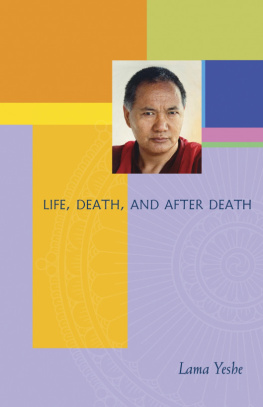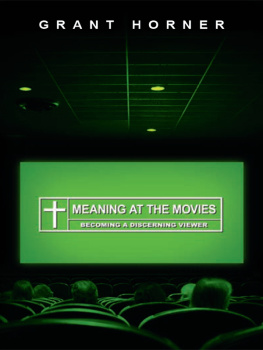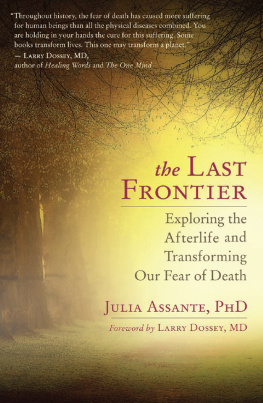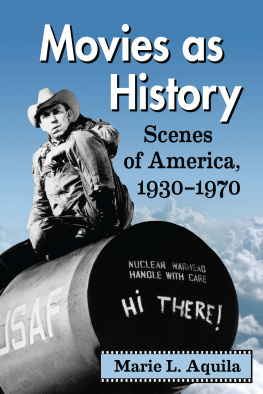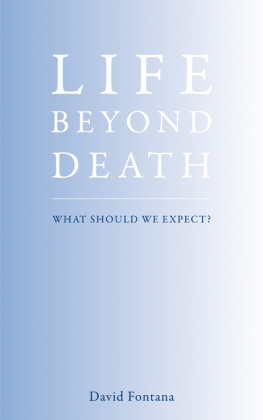DEATH
AT THE
MOVIES
DEATH
AT THE
MOVIES
HOLLYWOODS GUIDE TO THE HEREAFTER
LYN AND TOM DAVIS GENELLI

Learn more about Lyn Tom Davis Genelli and their work at http://deathatthemovies.com/about-the-authors/
Find more books like this at www.questbooks.net
Copyright 2013 by Lyn and Tom Davis Genelli
First Quest Edition 2013
Quest Books
Theosophical Publishing House
PO Box 270
Wheaton, IL 601870270
Without limiting the rights under copyright reserved above, no part of this publication may be reproduced, stored in or introduced into a retrieval system, or transmitted, in any form, or by any means (electronic, mechanical, photocopying, recording, or otherwise), without the prior written permission of the publisher of this book.
The scanning, uploading, and distribution of this book via the Internet or via any other means without the permission of the publisher is illegal and punishable by law. Please purchase only authorized electronic editions, and do not participate in or encourage electronic piracy of copyrighted materials.
While the author has made every effort to provide accurate telephone numbers and Internet addresses at the time of publication, neither the publisher nor the author assumes any responsibility for errors or for changes that occur after publication. Further, the publisher does not have any control over and does not assume any responsibility for author or third-party websites or their content.
Cover image: X-etra/Shutterstock.com
Cover design by Drew Stevens
Typesetting by Wordstop Technologies, Chennai, India
Excerpt from The Dead Woman in The Captains Verses: The Love Poems by Pablo Neruda. Copyright 1972 by Pablo Neruda and Donald D. Walsh. Reprinted by permission of New Directions Publishing Corporation. AS TIME GOES BY (from Casablanca"). Words and Music by HERMAN HUPFELD. 1931 (Renewed) WB MUSIC CORP. All Rights Reserved. Used by Permission of ALFRED MUSIC PUBLISHING CO., INC. Excerpt from Little Gidding from Four Quartets by T.S. Eliot. Copyright 1942 by Houghton Mifflin Harcourt Publishing Company; Copyright renewed 1970 by T.S. Eliot. Reprinted by permission of Houghton Mifflin Harcourt Publishing Company, and Faber and Faber Ltd. All rights reserved. Excerpt from The Kabir Book by Robert Bly. Copyright 1971, 1977 by Robert Bly. 1977 by the Seventies Press. Reprinted by permission of Beacon Press, Boston.
Library of Congress Cataloging-in-Publication Data
Genelli, Lyn.
Death at the movies: Hollywoods guide to the hereafter /
Lyn and Tom Davis Genelli.
pages cm.
Includes index.
ISBN 9780835609166
1. Death in motion pictures. 2. Motion pictures-Religious aspects-Buddhism.
I. Genelli, Tom Davis. II. Title.
PN1995.9.D37G46 2013
791.436823-dc23 2013006764
ISBN for electronic edition, e-pub format: 9780835621212
5 4 3 2 1 * 13 14 15 16 17
To the one light and all its reflections.
Movies are not only not reality, theyre also not even about reality.
Mick LaSalle, San Francisco Chronicle
For such creatures of luxury as Americans, dharma Is most digestible between slices of entertainment like movies.
Dean Sluyter, Cinema Nirvana
It is not how things are in the world that is mystical, but that it exists.
Ludwig Wittgenstein, Tracticus Logico-Philosophicus
CONTENTS
INTRODUCTION
And God said, Let there be light: and there was light.
Genesis 1:3
O ur scenario begins with the advent of the talkies. Based on a Broadway play, the film Outward Bound (1930) set a precedent for realistic depiction of the afterlife, devoid of fleecy clouds and heavenly choirs, suggesting rather that the condition of being dead looks and feels pretty much like our everyday lives and that the immediate problem is how to awaken to our true circumstances before we make our situation even worse. The film implies that life and death are in some way the same and that what we do in one realm is manifest in the other. It provocatively evokes the concept of life as a divinely ordained task for each individual, the notion of suffering as retribution for sins in other lifetimes, the theory of rebirth in higher or lower planes, and the existence of transcendent souls that act out links of destiny with other souls through continuing incarnations on various interacting planesall in all, a heady amount of metaphysical content to find at the Bijou on a Saturday afternoon in 1930.
The film was remade in 1944 as Between Two Worlds, one of many popular afterlife fantasy dramas produced during the World War II years that, consciously intended or not, provided comfort for those at home grieving for loved ones lost to the ravages of war. Taken as a body, these films, so uplifting in their intent were, years later, accorded Film blanc included such classics as Here Comes Mr. Jordan (1941), Casablanca (1942), A Guy Named Joe (1943), Blithe Spirit (1945), Angel on My Shoulder (1946), A Matter of Life and Death (released in the United States as Stairway to Heaven, 1946), and Americas most beloved Christmas movie, Frank Capras Its a Wonderful Life (1946), all released or in production during the war years. When the war ended the country returned to a specious normalcy and film blanc lay dormant as its audiences mood turned to the nations unacknowledged trauma, reflected in motion pictures by film noir, a genre that explicitly denied all possibilities of transcendence to portray a world of violence, cynicism, and death.
For a number of sociological and historical reasons to be pondered in this book, film blanc was powerfully resuscitated in 1980 with the release of the ironically, but appropriately, titled Resurrection, closely followed by (noting only major releases) Poltergeist (1982), Beetlejuice (1988), Field of Dreams (1989), Ghost (1990), Jacobs Ladder (1990), Defending Your Life (1991), Groundhog Day (1993), Heart and Souls (1993), Sixth Sense (1999), Birth (2004), and Hereafter (2010). In a way the genre had never really run its course, but rather gone underground, its themes encoded into any number of popular ghost and fantasy films of the postwar periodfilms such as The Ghost and Mrs. Muir, Portrait of Jennie, or Heaven Only Knows.
That a transmuted form of the film-blanc genre would eventually resurface is not surprising given that the subjectdeath and the transition of the soul from one life to anotherhas been an abiding theme from the very beginnings of storytelling. The development of culture in human societies has generally involved a view that death is a journey, a release from the limited physical realms of time and space into the unlimited and measureless universe of spiritinfinite, eternal, Such scenarios are the mothers milk of philosophy and religion, as well as the subject of speculation, debate, fantasy, art, and, of course, the movies. The metaphysical dynamics of these scenarios, provided by history, and the popular motion picture, reveal deep and abiding human concerns about the hereafter and how we get there.
That journey, the curious space between death and what lies beyond, is referred to in this book as transit, defined by The American Heritage Dictionary as a transition or change, as to a spiritual existence at death.
Out of our respect for the innate wisdom of humanity and in the spirit of offering an entertaining look at a serious subject for film lovers, spiritual seekers, and anyone curious about what follows death, we offer this book. If it in any small way provides wisdom about what lies beyond, that is a bonus prize indeed.
Next page

